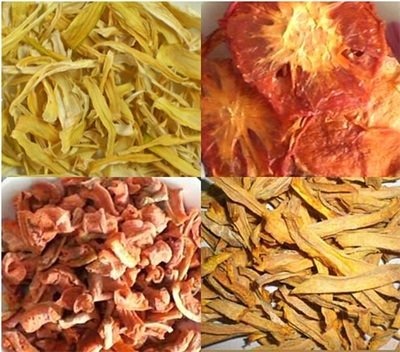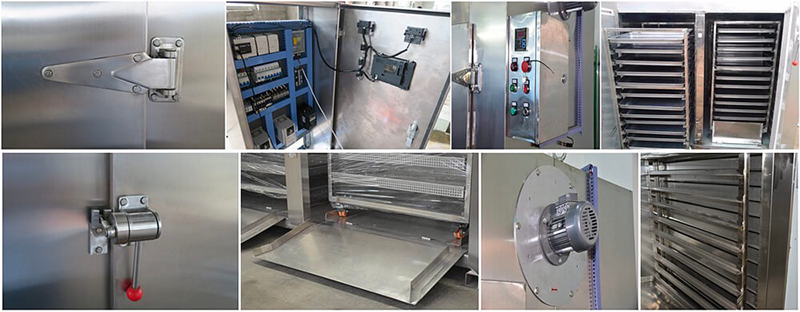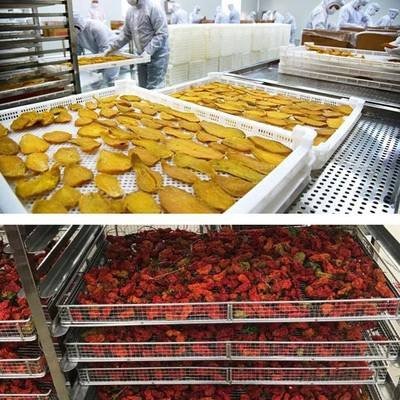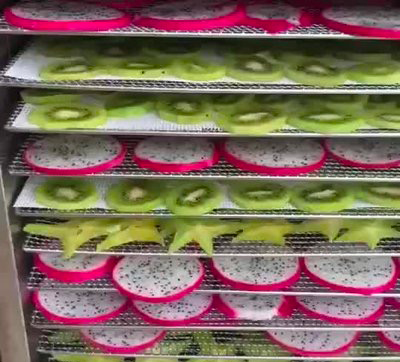
Content Menu
● Understanding Heat Pump Dryers
● Benefits of Using Heat Pump Dryers for Food Drying
● Factors Affecting Drying Time
● Typical Drying Times for Various Foods
● Best Practices for Using Heat Pump Dryers
● Common Misconceptions About Heat Pump Dryers
● Conclusion
● FAQ
>> 1. What is a heat pump dryer?
>> 2. How does a heat pump dryer differ from traditional dryers?
>> 3. Can I dry all types of food in a heat pump dryer?
>> 4. How do I know when my food is fully dried?
>> 5. What should I do if my food is taking too long to dry?
Heat pump dryers are becoming increasingly popular in both domestic and commercial settings due to their energy efficiency and versatility. In this article, we will explore the workings of heat pump dryers, particularly in the context of food drying, and answer the question: How long does a heat pump dryer take? We will also discuss the benefits of using heat pump technology for food drying, the factors affecting drying time, and provide insights into best practices for optimal results.

Understanding Heat Pump Dryers
Heat pump dryers utilize a refrigeration cycle to remove moisture from food items. Unlike traditional drying methods that rely on direct heat sources, heat pump dryers recycle hot air within the system, making them more energy-efficient.
How Heat Pump Dryers Work:
1. Air Intake: The dryer pulls in ambient air.
2. Heating Process: The air is heated using a compressor and then circulated through the drying chamber.
3. Moisture Removal: As the hot air passes over the food items, it absorbs moisture.
4. Condensation: The moisture-laden air is directed to a condenser where it cools down, causing the moisture to condense into water.
5. Recycling Air: The now-dry air is reheated and cycled back into the drying chamber.
This process not only conserves energy but also allows for more precise control over the drying environment, which is crucial for maintaining food quality.
Benefits of Using Heat Pump Dryers for Food Drying
Heat pump dryers offer several advantages over conventional methods:
- Energy Efficiency: They consume less energy by recycling hot air, which is especially beneficial for businesses looking to reduce operational costs.
- Temperature Control: They operate at lower temperatures, which helps preserve the nutritional value of food. This is particularly important for delicate items like herbs and fruits that can lose flavor and nutrients when exposed to high heat.
- Versatility: Suitable for a wide range of food items including fruits, vegetables, herbs, and meats. This flexibility makes them ideal for both home cooks and commercial operations.
- Reduced Operating Costs: Lower energy consumption translates to cost savings over time. For businesses, this can significantly impact the bottom line.
- Less Environmental Impact: By using less energy, heat pump dryers contribute to lower greenhouse gas emissions compared to traditional dryers.
Factors Affecting Drying Time
Several factors influence how long it takes for a heat pump dryer to dry food:
- Type of Food: Different foods have varying moisture content and density, affecting drying times. For example, thinly sliced fruits will dry faster than whole vegetables.
- Initial Moisture Content: Foods with higher moisture content will take longer to dry. For instance, freshly harvested vegetables typically contain more water than those that have been pre-dried or stored.
- Airflow Rate: Proper airflow is crucial for effective drying; restricted airflow can increase drying times. Ensuring that food items are arranged properly within the dryer can help maintain optimal airflow.
- Temperature Settings: Higher temperatures can speed up drying but may compromise food quality. It's essential to find a balance between speed and preserving flavor and nutrients.
- Batch Size: Larger batches may require more time due to reduced airflow around each item. It's advisable to dry smaller batches when possible for more efficient results.

Typical Drying Times for Various Foods
To give you an idea of how long it typically takes to dry different types of food using a heat pump dryer, here are some average drying times:
| Food Type | Average Drying Time |
| Apples (sliced) | 6-12 hours |
| Carrots (sliced) | 6-10 hours |
| Herbs | 1-4 hours |
| Beef Jerky | 4-8 hours |
| Tomatoes (sliced) | 6-12 hours |
These times can vary based on specific conditions such as humidity levels in the environment and the specific model of the heat pump dryer being used.
Best Practices for Using Heat Pump Dryers
To achieve optimal results when using a heat pump dryer for food drying, consider the following best practices:
1. Pre-Treat Food Items: Some foods benefit from pre-treatment methods such as blanching or soaking in lemon juice to enhance flavor and color retention. For example, blanching vegetables before drying can help preserve their color and nutritional value.
2. Slice Uniformly: Cut food items into uniform sizes to ensure even drying. Thicker pieces will take longer to dry than thinner ones; therefore, uniformity helps achieve consistent results across all items being dried.
3. Avoid Overloading: Do not overcrowd the dryer; allow sufficient space for airflow around each item. This ensures that all pieces receive adequate exposure to hot air, leading to more efficient drying.
4. Monitor Progress: Regularly check the progress of your drying cycle to avoid over-drying or under-drying. Some models come with built-in timers or sensors that can help monitor moisture levels.
5. Store Properly After Drying: Once dried, store food in airtight containers in a cool, dark place to maintain freshness. Proper storage is crucial as it prevents moisture reabsorption and preserves flavor.
6. Experiment with Different Foods: Don't hesitate to try different types of foods and combinations in your heat pump dryer. Each type may require slight adjustments in time or temperature settings for optimal results.
7. Maintain Your Dryer: Regular maintenance of your heat pump dryer will ensure it operates efficiently over time. Clean filters and check seals regularly to prevent loss of efficiency.
Common Misconceptions About Heat Pump Dryers
There are several misconceptions regarding heat pump dryers that can deter potential users from utilizing this technology effectively:
- Misconception 1: They are Slow
While it's true that heat pump dryers may take longer than traditional dryers at high temperatures, they provide superior quality by preserving nutrients and flavors in foods.
- Misconception 2: They Are Expensive
The initial investment in a heat pump dryer may be higher than traditional models; however, their energy efficiency leads to significant cost savings over time due to lower electricity bills.
- Misconception 3: They Can Only Dry Certain Foods
Heat pump dryers are versatile machines capable of handling various foods from fruits and vegetables to meats and herbs effectively when used correctly.
Conclusion
Heat pump dryers are an excellent choice for anyone looking to efficiently dry food while preserving its nutritional value and flavor. By understanding how they work and following best practices, you can optimize your drying process and achieve great results.
In summary, while the exact time it takes for a heat pump dryer to dry food varies based on several factors—including type of food and initial moisture content—most foods can be dried within a range of 1 to 12 hours. This flexibility makes heat pump dryers an invaluable tool in both home kitchens and commercial settings.

FAQ
1. What is a heat pump dryer?
A heat pump dryer is an appliance that uses heat pump technology to remove moisture from food items by recycling hot air within its system, making it energy-efficient and effective for various types of food.
2. How does a heat pump dryer differ from traditional dryers?
Unlike traditional dryers that use direct heating elements, heat pump dryers utilize a refrigeration cycle that reuses hot air, resulting in lower energy consumption and better preservation of food quality.
3. Can I dry all types of food in a heat pump dryer?
Yes, heat pump dryers are versatile and can effectively dry a wide variety of foods including fruits, vegetables, herbs, and meats.
4. How do I know when my food is fully dried?
The best way to determine if your food is fully dried is to check its texture; it should be leathery or crisp depending on the type of food. You can also taste-test small pieces for dryness.
5. What should I do if my food is taking too long to dry?
If your food is taking longer than expected to dry, check for proper airflow around the items and ensure you are not overloading the dryer. Adjusting temperature settings may also help speed up the process.












